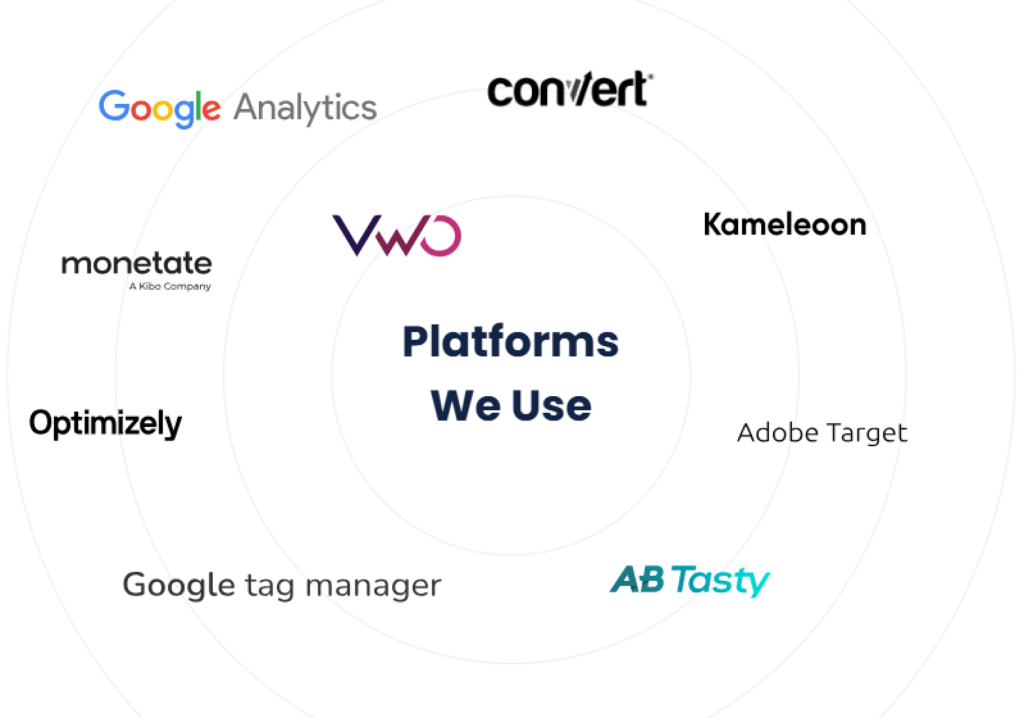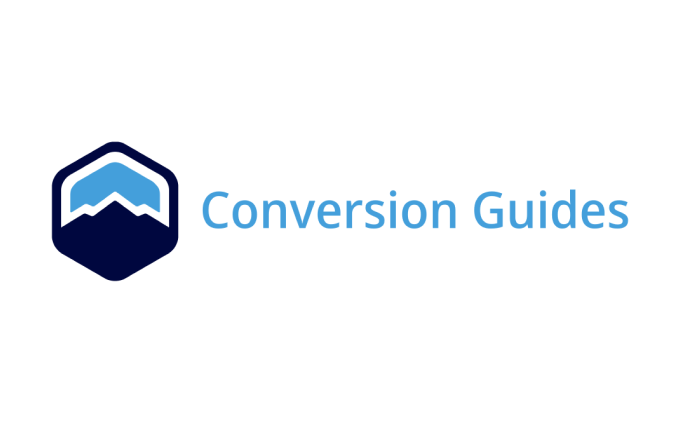A/B TEST DEVELOPMENT TEAM
Elevate Your Experimentation Program
Leverage our 10+ years of trusted expertise to build complex A/B tests from initial audits and user research to seamless execution—boosting your CRO program’s speed and ROI.
- Complex A/B Testing Expertise – Launch sophisticated experiments with ease.
- End-to-End Process – From audits and strategy to development and launch.
- Upfront Estimation & Rapid Delivery – Clear level-of-effort assessments and efficient turnaround.
- Trusted by Top CRO Agencies – Decades of excellence powering real results.
Leverage our 10+ years of trusted expertise to build complex A/B tests from initial audits and user research to seamless execution
- Launch Experiments with Ease
- Get all Inclusive service Audit to launch
- Upfront Estimation and Rapid Delivery
- Trusted by Top CRO Agencies for more than a Decade
“We are not just writing code, we are solving problems.”
Abdullah Mashuk | CEO | BrillMark

Trusted by Over 200 Leading CRO Agencies and Global Brands Worldwide
Across DTC, B2B, B2C, and eCommerce, our advanced A/B test development and digital solutions consistently drive measurable growth. Join the companies that rely on BrillMark to elevate their experimentation strategy.









All Inclusive A/B Test Development Services
BrillMark acts as an extension of your development team, supercharging your experimentation with speed, quality, frequency, and tangible impact. Our end-to-end services streamline everything from A/B test development to post-launch optimization, ensuring your business consistently hits — and exceeds — its conversion goals.
A/B Test Development
We specialize in high-velocity A/B testing—including server-side tests, multivariate experiments, personalization, and split-URL testing. Our process is designed for maximum efficiency and quality:
- Rapid Development: Build and deploy tests—often within a single day—on any platform.
- Adherence to Best Standards: We code with precision and follow strict QA protocols to guarantee flawless execution.
- Scalable Approach: Whether you’re a startup or an enterprise, our solutions adapt to your evolving needs.
A/B Test Tool Setup
Proper goal setting and data accuracy are vital for making informed decisions. We partner with leading platforms—Optimizely, Convert, AB Tasty, Varify.io, and more—to:
- Implement Quick & Accurate Setups: Eliminate guesswork with precise goal tracking.
- Streamline Data Flow: Ensure every metric you track feeds back into your experimentation seamlessly.
- Optimize Tool Usage: Maximize platform capabilities for faster, more reliable insights.
CRM Integration
A/B testing doesn’t deliver its full value if your marketing tools aren’t aligned. We integrate essential platforms like Marketo, HubSpot, and Clearbit with testing environments to:
- Sync CRM Dashboards: Keep all vital data in one place for easy analysis and action.
- Prevent Data Silos: Eliminate fragmented reporting and guesswork.
- Enhance Campaign Efficiency: Deploy, measure, and iterate on marketing strategies with confidence.
A/B Test Mockups & Design
Leverage our proven templates and design expertise to create captivating test variations:
- Industry-Trend Alignment: Modern, conversion-focused layouts that resonate with your brand’s identity.
- Enhanced Functionality: Optimize landing pages, PDPs, and theme customizations without sacrificing style.
- Faster Feedback Loops: Quickly iterate on designs, elevating user experience and conversion rates.
Server side testing
We excel in server-side A/B testing, handling code-level configurations across various tech stacks:
- Flexible Integration: Whether it’s a custom-built site, eCommerce platform, or React-based app, we integrate smoothly.
- Accurate Data Collection: Ensure every user interaction is captured correctly, enabling precise measurements.
- Future-Proof Solutions: Build for scalability, so your testing strategy remains effective as you grow.
Analytical Support
Data is key to driving meaningful improvements. We offer comprehensive analytical services, including GTM, GA4 configuration, and Looker Studio integrations:
- Dedicated Tool Setup: From code-level configuration to goal/event tracking, we ensure top-notch accuracy.
- Actionable Insights: Equip your team with reliable data to make informed decisions.
- Industry Best Practices: Maintain consistency and compliance throughout your project’s lifecycle.
A/B Test Quality Assurance
Our commitment to QA ensures your tests run flawlessly:
- Customized Checklists: Every test receives a tailored QA plan to cover edge cases and unique scenarios.
- Pre- & Post-Launch Testing: Maintain high standards at every stage, minimizing costly rework.
- Reduced Delays: Fewer back-and-forth cycles mean faster approvals and timely launches.
CRO Support
With decades of A/B testing expertise, BrillMark keeps you ahead of the curve:
- Cutting-Edge Insights: Stay on top of the latest trends and innovative tactics in conversion optimization.
- Strategic Guidance: We become an extra pair of eyes, refining your CRO campaigns for maximum impact.
- Focused on Results: Our goal is your success—each recommendation is designed to help you achieve measurable growth.
Ready to Take Your Experimentation to the Next Level?
What’s our A/B Test Development Process
The most common we hear are below.

Idea Assessment
- Understand your digital project concept.
- Ensure feasibility
- Address questions to align visions.
- Provide detailed effort and timeline estimates.
- Proceed development/designing with precision upon approval.
We craft designs and strategies that resonate with your brand and appeal to your target audience.
- Brand Voice Analysis: Delve into your brand identity to ensure consistency.
- Insight Gathering: Incorporate A/B test insights and market research findings.
- UI/UX Design: Integrate proven UI/UX elements to enhance user engagement.
- Mobile Responsiveness: Design with a mobile-first approach for optimal responsiveness.
- Feedback Implementation: Collaborate with you to refine designs based on your feedback.
- Design Approval: Finalize development-ready mockups upon your approval.
Our development team brings the designs to life with clean, efficient code
- Local Development: Create code in a secure, local environment to ensure quality.
- Environment Setup: Set up code in staging environments or relevant platforms (e.g., CMS, e-commerce platforms).
- Quality Coding Practices: Adhere to industry best practices for reliability and maintainability.
- Responsive Development: We ensure functionality across all devices and browsers..
- Client Feedback Integration: We incorporate additional feedback during the development phase.
We rigorously test every aspect of the project to guarantee flawless performance.
- Test Case Development: Create detailed test cases and scenarios covering all functionalities.
- Self-QA Checklists: Developers perform initial checks using comprehensive QA checklists.
- Multiphase Testing: Conduct multiple rounds of QA, including functional, usability, performance, and security testing.
- Goal and KPI Verification: Set up and verify goals, metrics, and KPIs for precise tracking.
- Transparency and Collaboration: Share QA reports and checklists with you for full transparency.
We ensure a smooth launch and provide support to maintain and enhance your project's success.
- Pre-Launch Verification: Perform final checks to confirm everything is ready for deployment.
- Seamless Deployment: Execute the launch efficiently to minimize downtime or disruptions.
- Post-Launch Monitoring: Monitor the project's performance to ensure stability and effectiveness.
- Continuous Maintenance: Offer ongoing support and maintenance to keep your project up-to-date and secure.
- Performance Optimization: Continuously analyze and optimize for improvements based on real-world data.
Why Choose BrillMark for A/B Test Development?
Compare how BrillMark’s full-service, CRO-focused team outperforms a traditional, non-A/B testing developer setup.
PACKAGE
Criteria
Brillmark Dev Package
Non-AB Testing Developer
Team Composition
Full-Service A/B Testing Experts – Enjoy a dedicated crew of project managers, developers, QA specialists, GA & tool analysts, CRO strategists, and UX designers working in sync on your experimentation goals.
Typically a solo developer or a small, core-centric team with limited knowledge of A/B testing tools and methodologies, risking delays and subpar execution.
Service Scope
All-Inclusive, End-to-End – From ideation and technical setup to development, QA, and final deployment, we handle every stage for your A/B test campaigns and CRO projects.
Primarily Development-Focused – Lacks comprehensive A/B testing support and tool knowledge, limiting capabilities for big experimentation or complex test implementations.
Cost-Effectiveness
Transparent, Hourly Model – Pay only for the services you need, with no hidden costs. Gain a complete, cross-functional team—no need for multiple separate hires.
Hidden Costs for Each Stage – Separate fees for project management, QA, analytics, etc., quickly driving up expenses as your testing and development needs grow.
Flexibility & Integration
Seamless Collaboration – Our specialists coordinate under one process, ensuring timely delivery and frictionless integration with your internal workflows and marketing tools.
Limited Team Interaction – Focused on narrow deliverables with minimal synergy, often causing communication gaps, missed deadlines, or suboptimal test designs.
End-to-End Support
Dedicated Lifecycle Assistance – From platform migrations (Shopify, WordPress) to new site launches, we provide ongoing support for everything from setting up goals to troubleshooting post-launch issues.
Minimal Post-Launch Backup – Tends to offer limited dev support for diagnosing goal-tracking problems or resolving analytics bugs after deployment.
The BrillMark Edge for High-Velocity A/B Testing
- Decade of Experience: 10+ years optimizing eCommerce, B2B, and B2C clients with sophisticated testing strategies.
- Tool Partnerships: Certified experts in Optimizely, VWO, Convert, Adobe Target, and more for smoother campaign execution.
- Data-Driven Methodology: Comprehensive QA and goal validation to ensure accurate insights and ROI on your tests.
- Scalable Solutions: Adaptable to any tech stack, from single-page applications to complex eCommerce platforms like Shopify 2.0.

Ready to Transform Your Experimentation Program?
Choose BrillMark’s fully equipped team to supercharge your A/B test development and turn data into real growth. Get in touch today to learn how our holistic approach can accelerate your CRO success.
What Our Clients Say about Us?
The Perfect Solution for Your Business Tailored strategies that transform challenges into opportunities for success.
“I can’t imagine any other companies out there in a similar situation where we are that couldn’t benefit from the services that Brillmark offers.”
Gayla Worrell
CRO at Snap Finance
“Finding competent professionals to bring conversion research ideas to life and deliver results for clients without breaking their websites was challenging – until I found Brillmark. Abdullah and his team are a group of technical A-players with whom anyone serious about CRO and experimentation should work*. I’ve collaborated with them on multiple projects, and they consistently prove they’re the real deal.”
Amara Abara
Founder at Conversion Central








Ready to Get in Touch?
We offer various pricing models to give our clients the flexibility they need.
- Glad! We found each other.
- Let’s set up an introductory call.
- Discuss your plans, goals, and our solutions.
- You choose the plan that works best for you.
- We shake hands and make agreements.
Fill out the form and we'll be in touch as soon as possible.
We look forward to partnering with you to accelerate your digital growth.
If you have any questions or prefer to contact us directly, please email us at info@brillmark.com.
Flexible Engagement Models
We offer flexible engagement models that fit your unique needs, enabling scalable results with expert Optimizely test developers.
Full-Service Optimization
A comprehensive, hands-on approach to drive every aspect of your optimization process with expert guidance and implementation.
Strategy Development:
Custom Optimizely testing strategies that align with your goals.
Test Implementation:
Efficient setup of A/B tests and experimentation.
In-depth Analysis:
Continuous monitoring and data-driven insights.
Performance Optimization:
Ongoing fine-tuning for maximum ROI.
Consulting & Support
Get expert advice and strategic recommendations to enhance your Optimizely testing efforts, without the need for full-scale implementation.
Tailored Guidance:
Personalized consultation to refine your Optimizely strategy.
Test Optimization:
Recommendations for improving ongoing A/B tests.
Analytics Review:
Expert analysis of test results and insights.
Ongoing Assistance:
Periodic support to ensure continued success.
Project-Based Collaboration
Collaborate with our team on a project basis for specific goals, such as improving conversion rates or running focused Optimizely experiments.
Goal-Oriented Projects:
Focused on achieving specific milestones and outcomes.
Targeted Testing:
Run dedicated Optimizely A/B tests for key page elements.
Short-Term Engagement:
Flexibility to scale based on project needs.
Defined Timelines:
Clear project timelines and deliverables for your business.
FAQ
Frequently asked questions
Completely whiteboard top-line channels and fully tested value. Competently generate testing procedures before visionary maintainable growth strategies for maintainable.
Getting started is easy! Contact us through our website, and one of our representatives will reach out to discuss your needs and help you achieve your goals.
We offer a comprehensive suite of services, including:
A/B Test Development: Tailored A/B testing solutions to optimize your website’s performance.
Custom Web Development: Expertise in Shopify, WordPress, and other platforms
BrillMark serves diverse industries, including e-commerce, technology, finance, and healthcare. Our flexible approach and expertise enable us to tailor services to meet specific challenges and regulations in various sectors.
Absolutely! We often collaborate with in-house teams, providing specialized knowledge and additional bandwidth where needed. Whether it’s tackling specific challenging aspects of A/B testing, handling overflow work, or offering unique insights and strategies, we integrate smoothly with your operations to enhance outcomes.
Our comprehensive QA process involves thorough testing and reviews at every stage to ensure the highest quality. Our QA team works closely with you, examining every user interaction and edge case to guarantee flawless performance. We maintain full transparency by sharing detailed QA checklists and reports, giving you confidence that everything has been meticulously tested.
BrillMark specializes in high-velocity A/B test development and complex experimentation without disrupting your existing processes. We stand out due to our extensive experience, quick turnaround times, and reliability. Our platform-agnostic expertise, comprehensive suite of services, and ability to seamlessly integrate with your team make us a versatile partner in your digital strategy.
Our approach combines advanced tools with a team of skilled developers and testers who quickly identify and implement impactful solutions. We prioritize communication and transparency, keeping you informed throughout the process. Our efficient methodologies accelerate testing and deliver faster results.
Getting started is easy! Contact us through our website, and one of our representatives will reach out to discuss your needs and help you achieve your goals.
Absolutely! We often collaborate with in-house teams, providing specialized knowledge and additional bandwidth where needed. Whether it’s tackling specific challenging aspects of A/B testing, handling overflow work, or offering unique insights and strategies, we integrate smoothly with your operations to enhance outcomes.
Our pricing is customized based on the specific needs and goals of each client. We offer flexible pricing models, including:
- Retainer-Based Partnerships: Ideal for businesses with ongoing needs, providing consistent support and priority service.
Yes, we offer packages and bundles tailored to diverse business needs and budgets. These may include combinations of services such as A/B testing, web development, and analytics support. Contact us to learn more and find the right package for you.










